#casta painting
Explore tagged Tumblr posts
Text
LOOK AT THE KIDS LITTLE SUIT. I LOVE IT.
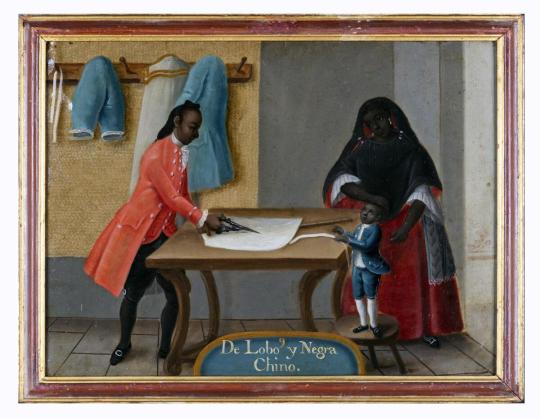
"De Lobo y Negra, Chino," Mexico City, circa 1775, oil on copper. An 18th century tailor of Black and Indigenous descent, his Black wife, and their child, in the exhibit Painted Cloth: Fashion and Ritual in Colonial Latin America.
769 notes
·
View notes
Text
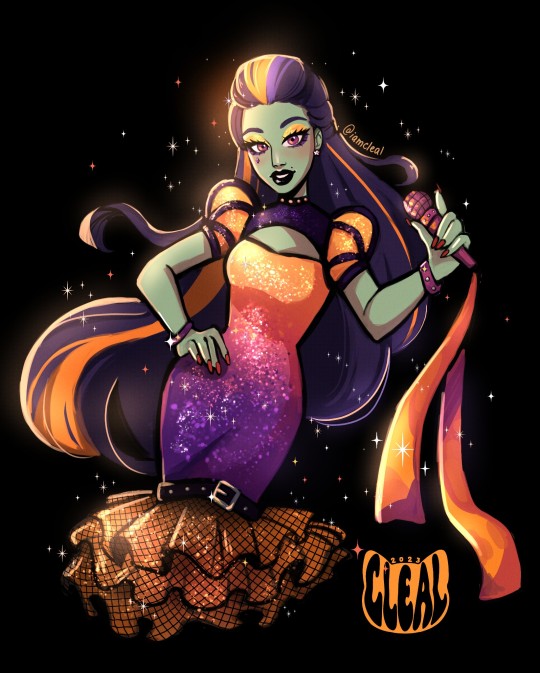
[MONSTER HIGH] Casta Fierce ✨️🪄
#digital art#artists on tumblr#digital drawing#illustration#digital illustration#artwork#clipstudio paint#casta fierce#monster high#monster high fanart#halloween#monster high casta fierce#witch
544 notes
·
View notes
Text

Laetitia Casta - Pierre & Gilles, 2000.
58 notes
·
View notes
Text

"Portrait of Madeleine Castaing" by Chaim Soutine. 1929.
#portrait of madeleine castaing#chaim soutine#1929#expressionist art#expressionism#modern art#painting#MET
3 notes
·
View notes
Text
Spelldon Monster High Custom

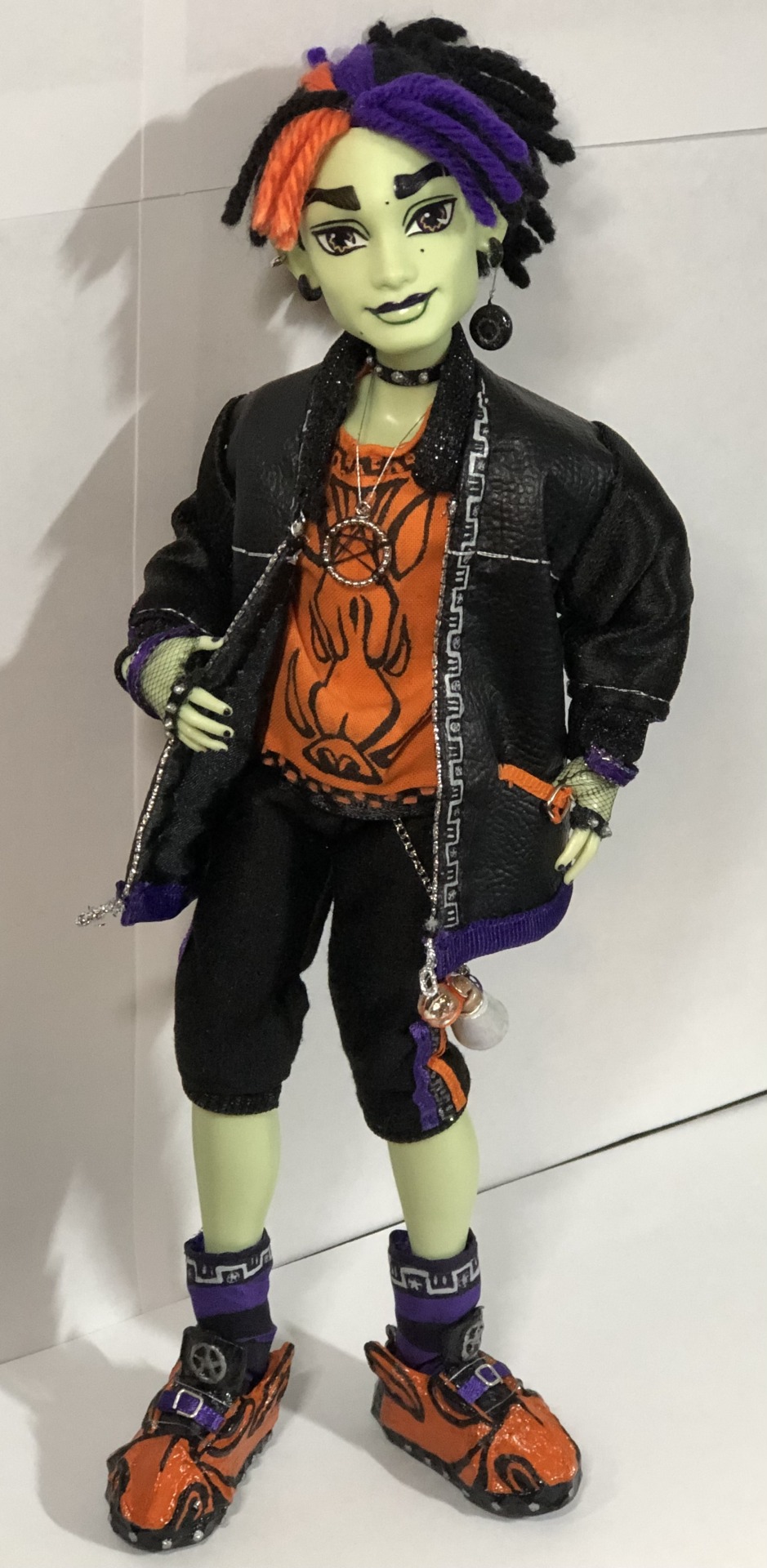
Once I saw that G3 Deuce had green skin, I knew I had to try my hand at making Spelldon Cauldronello. I re-haired him and flocked the sides of his head with yarn to imitate dreads. I sewed him a jacket, shirt, joggers, and socks. I made his little potions (out of beads), earrings (also out of beads), necklaces, gloves, pointed ears (I wish I could have gotten them smoother, but they were so delicate that I could not sand them without them breaking), shoes (out of paperboard and papier-mâché), and repainted his face (my first full face repaint and daaang was that difficult to try and make his eyes and eyebrows look related to one another).
He’s not perfect, but he was super fun to pose and creating him was a HUGE learning experience (like to start sealing all of my thread knots with fabric glue).
You’re more than welcome to draw fanart/make your own based on mine, just tag me- I’d love to see them. Feel free to comment what you like/dislike think I should improve on. :)
Edit: thank you for all the sweet comments in the reblogs guys. You’re all making my day. :)
More under the cut

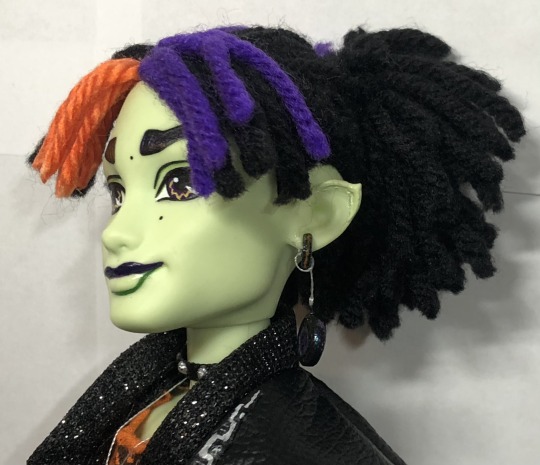
Close ups of his left side (I like how this ear turned out the best).
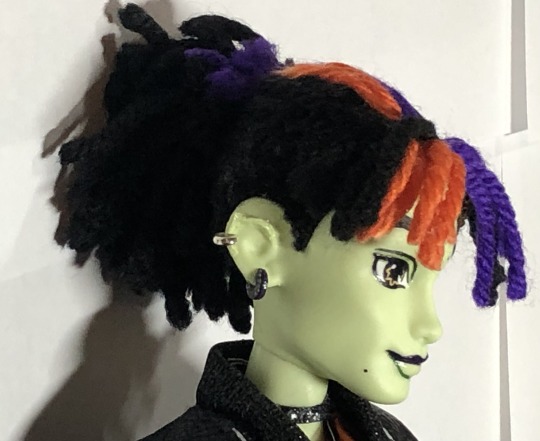
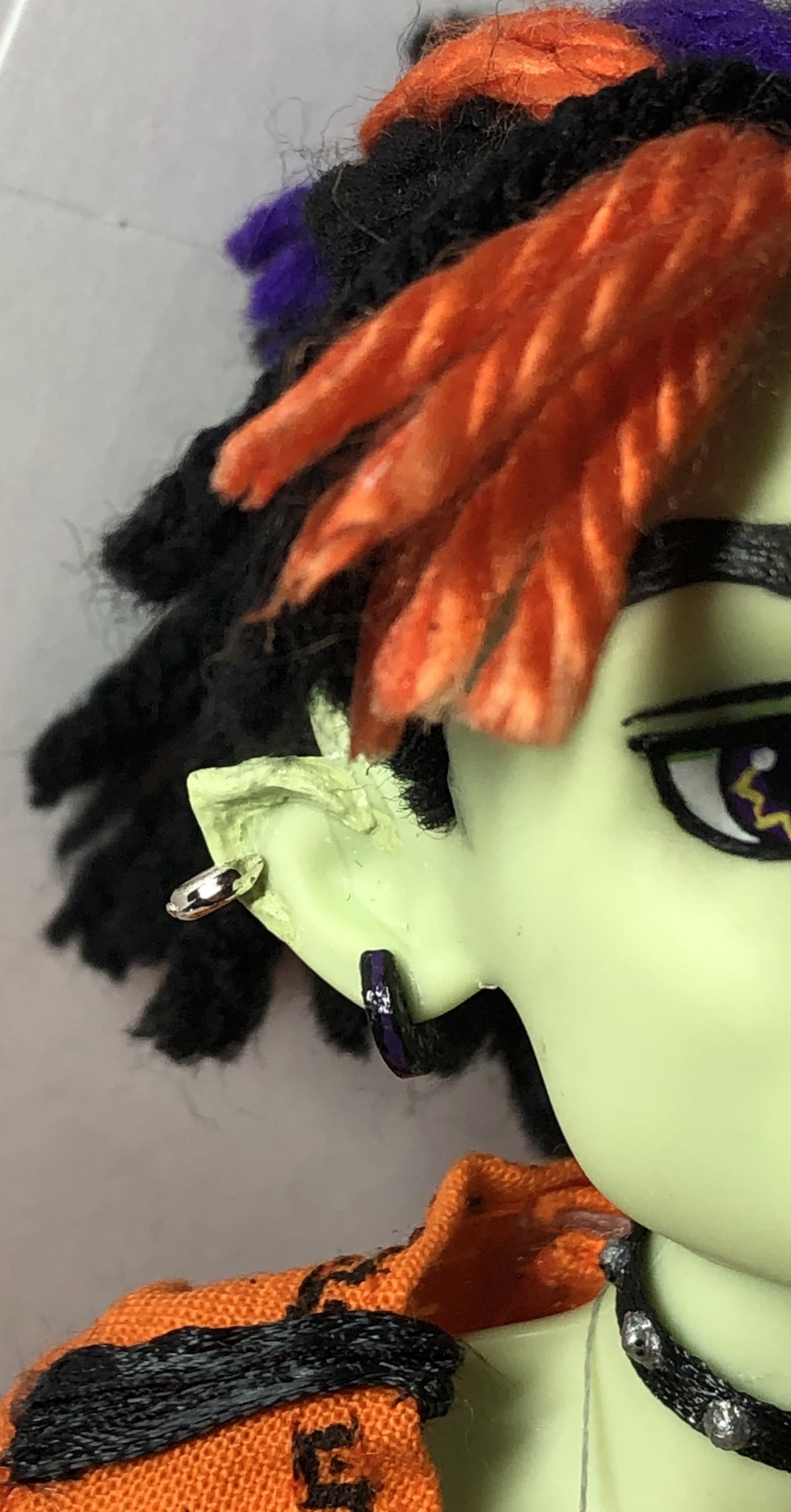
And his right side. I couldn’t get this side smoothed out to save my life, haha. Hopefully his earrings distract enough from it. Keeping beads from old bracelets come in handy! These were just the right size for him. I repainted the lower earring in black, with a stripe of purple, and added silver Ancient Greek designs on either side.
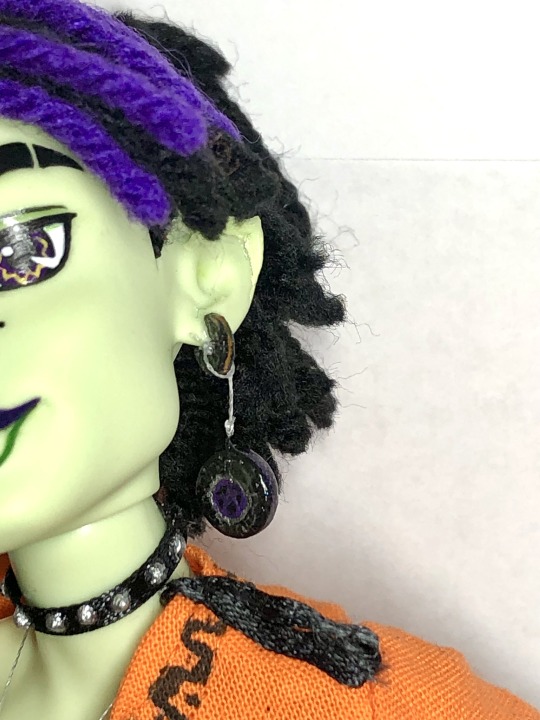
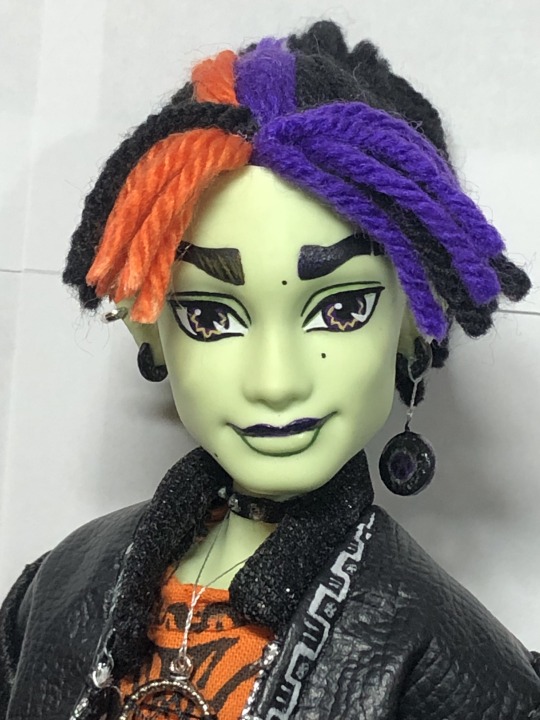
One more close up of his left ear and earring (I added a purple pentagram in the center of the silver Greek designs and the color shift sparkle paint around the rim). His upper earring is the same as his right lower earring, but has an orange stripe.
His face-up took awhile, but it is very rewarding to finally give him a face. I tried to make it look like the factory g1 monster high face up and took a lot of inspiration from his older sister Casta’s pupils. I gave him darker purple eyes, with the yellow/gold zig-zags. I gave him three moles, instead of just the one that Casta has, to mix it up a little. I did take a little inspiration from G3 for his eyebrows to add some orange and purple streaks in the front and a cut in his left eyebrow (I don’t know if that is still trendy, but I think it looks cool). The eyebrows are still not super symmetrical, but I already sealed it. I went back and forth on what I wanted his lip colors to be (I know I wanted something two toned) but finally decided on a dark purple upper lip, with a green outlined lower lip.
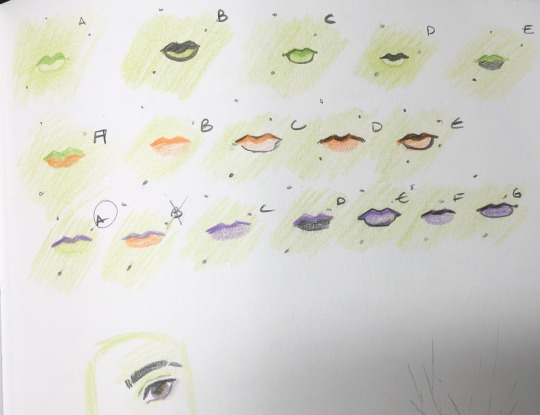
Also G3 heads are SUPER difficult to try and reattach (and remove) and have to be VERY squishy to put back on their bodies (even after I had trimmed down the neck peg).
Okay, onto his wardrobe! I wanted to imitate Casta’s color pallet: black, orange, purple, silver (and sparkles and studs), while bringing in more “witchy” themes (the buckles, stripe socks, and pentagrams), and his scaritage from his mama Circe (hence the potions, boars on his shirt and shoes, the greek vase designs and the boar designs being black on orange -like the Ancient Greek vases). Even on the Greek designs, I put some teeny tiny pentagrams (namely on his jacket sand socks).

His jacket took the longest (his shoes were the second longest). It is fully lined (the sleeves have a white lining to keep staining to a minimum), and working pockets. I liked the sparkly material I found, but does it shed like crazy (I used it for his collar, cuffs, pockets, and the bottom of his jacket in the back, and wrong side-out for his sleeves -they still have silver sparkles showing though and it doesn’t shed…but it will catch on things). I used thin ribbon for the outside of his pockets (next time I will fabric glue the ends shut on all my ribbons and a thicker ribbon for the bottom of his coat), and bent some wire into buckles. I also used ribbon wire and looped black thread over it to make it look like a zipper. I used fabric paint for the pattern down the front and REALLY hope it stays on there.
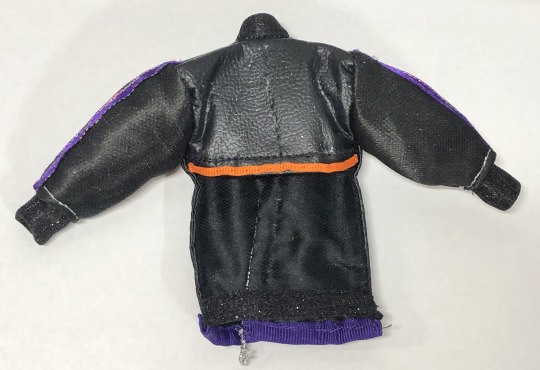
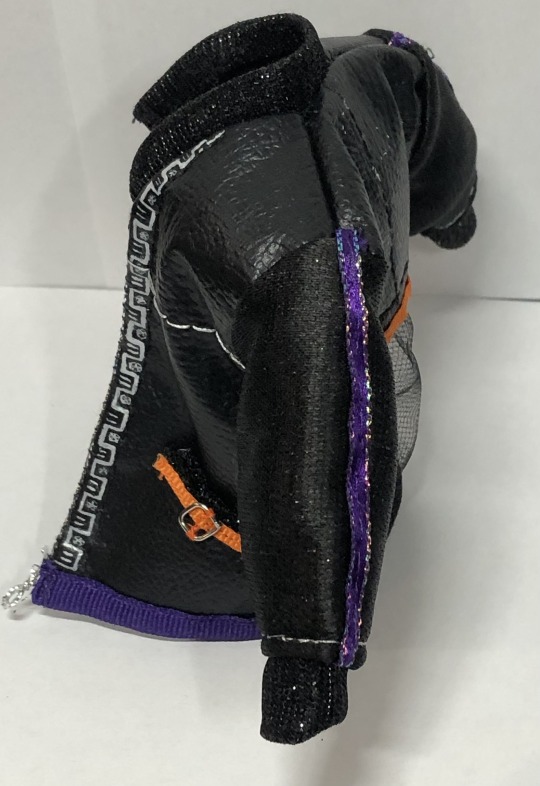
I really wanted a mesh back to his coat (I love how that part turned out), and then added this purple sparkly ribbon to his sleeves. He was going to have another pentagram in the back but it was too much (but it left a cool shadow of the star after I removed it).

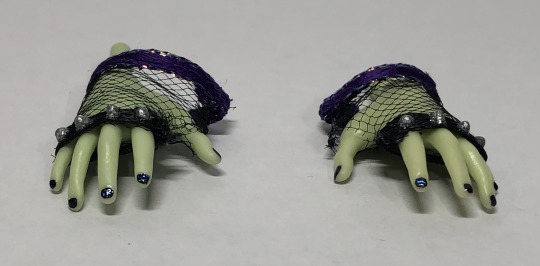
His gloves are made of mesh and ribbon (with glitter fabric glue continuously added on top of each other, and then painted silver, to make the spikes on his knuckles -same thing I did with his choker and shoes). His nails are painted black with the same color flash glaze paint as part of his earrings.
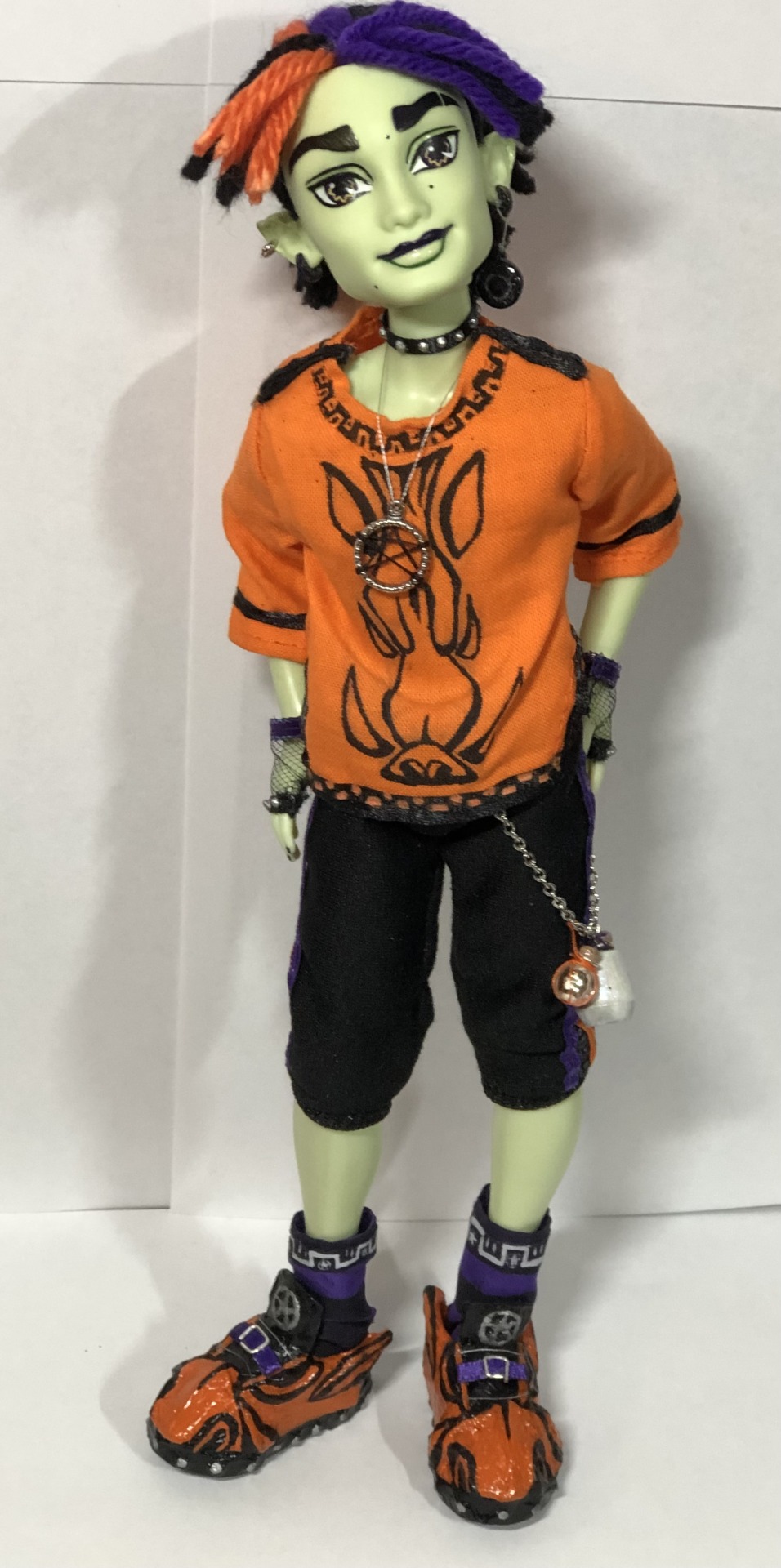
Okay onto his main outfit without the coat (he’s much more fun and easier to pose without his jacket).
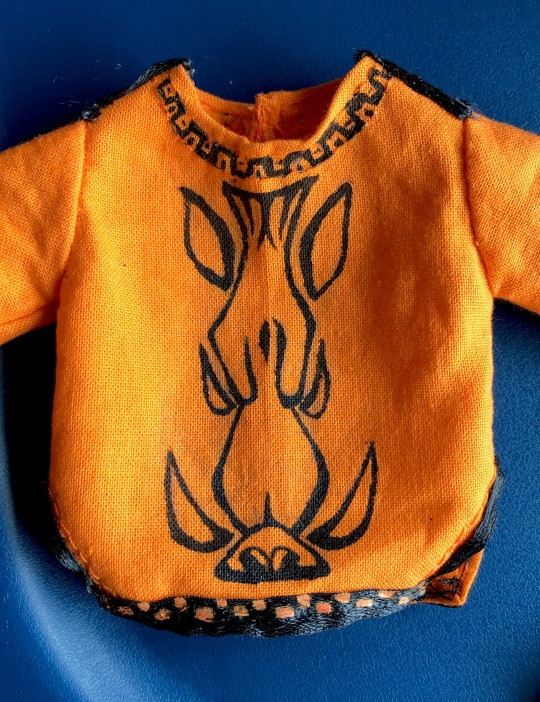
“Spelldon, please move your necklace out of the way, so we can see your shirt better, thank you.”
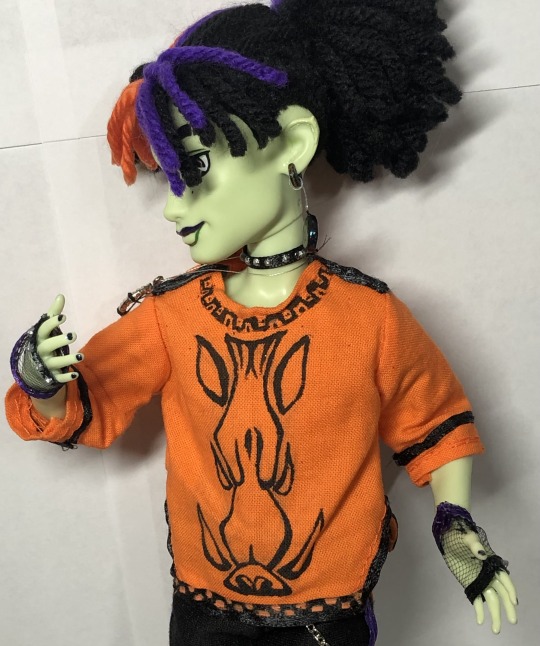
Close up of his wild boar and Greek vase designs on his shirt (done in fabric paint). I REALLY love how the boar turned out as I was SUPER nervous I was going to mess it up. Having a boar/Greek vase design on an orange shirt was also inspired by @spookberry ‘s design of Spelldon. His necklace pendant was another bead I had (and it worked great for attacking thread too).

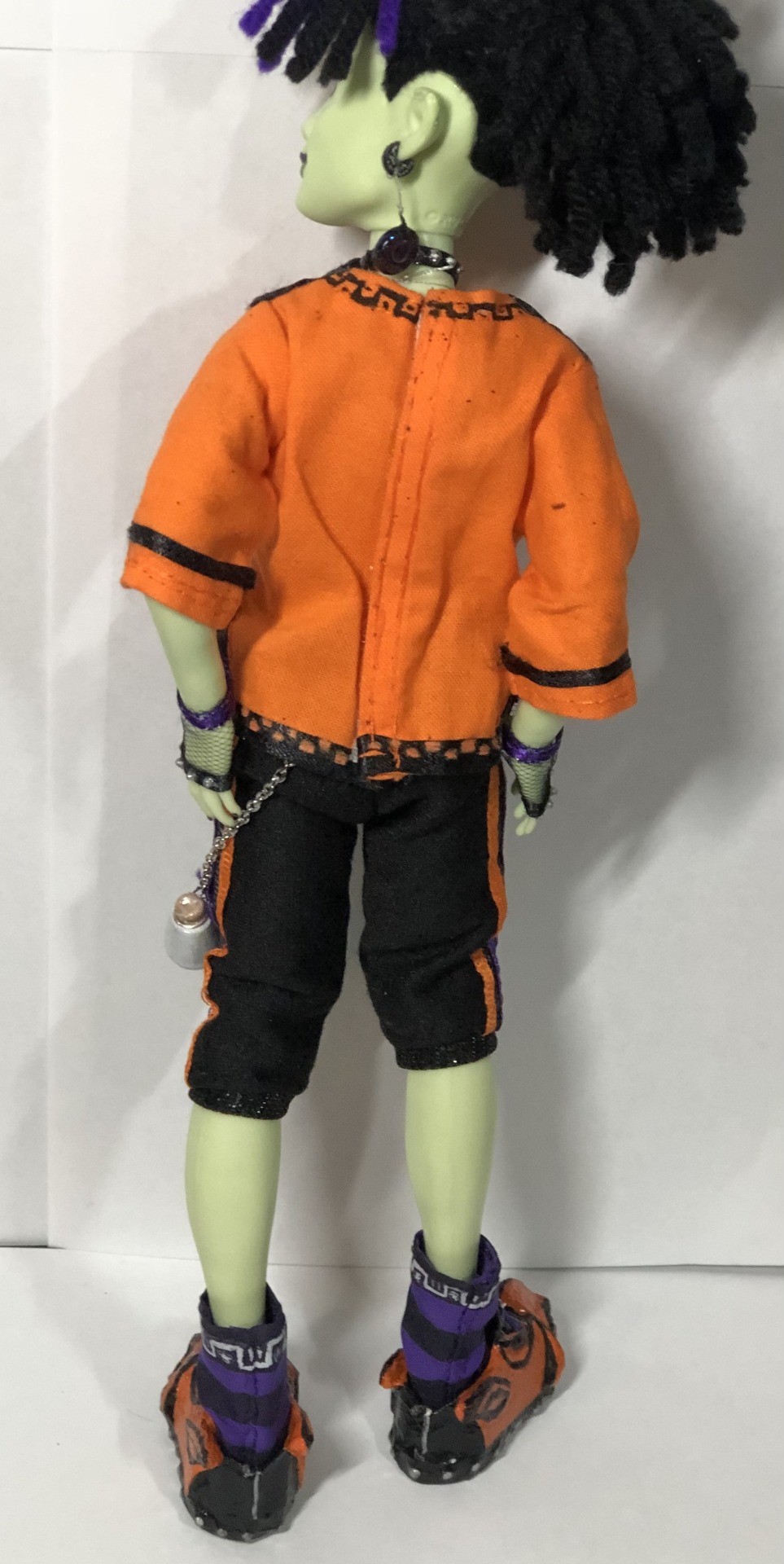
Side and back of his outfit (you can see some of that stray black glitter).


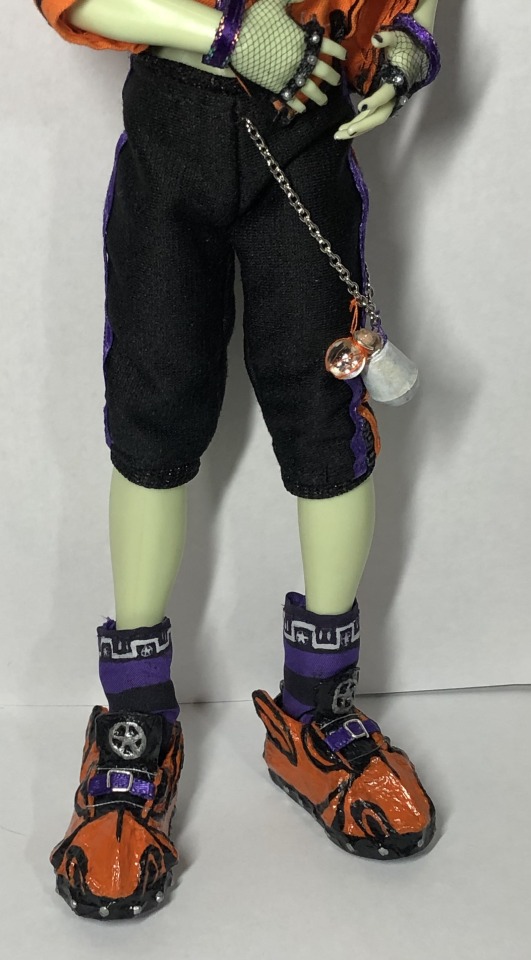
“‘Scuse me Spelldon, can you lift your shirt so we can see you joggers better? Thank you.” His joggers/capri’s and socks were inspired by @peppapigvevo ‘s Spelldon design. Once again I used ribbon, that sparkly material for his waistband and cuffs, and silver fabric paint for Greek vase design.
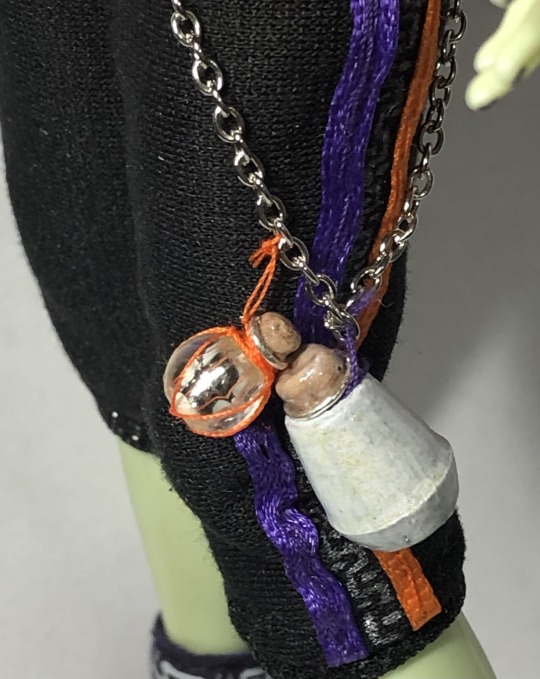
I attached a chain to his joggers and added these potion bottles (while Casta looks like she uses more magic spells and incantations through her singing, I like to think Spelldon uses potions -more like his mom). I made these potions out of wire, beads, thread and air-dry clay.
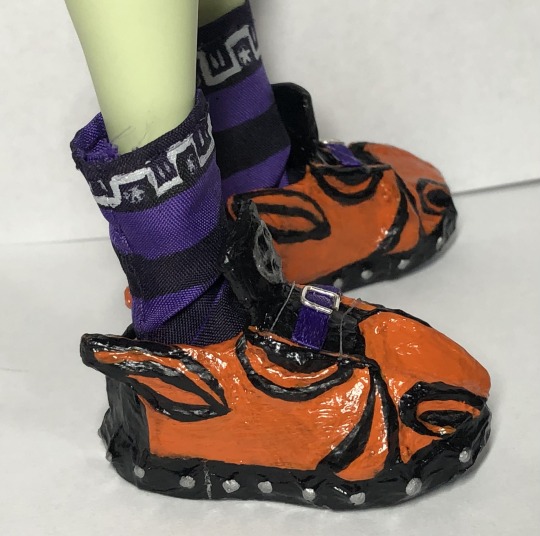


Onto his shoes and socks. I made the shoes out of paperboard and paper-maché. I wanted them to be boar themed while still having pentagrams and studs on them. They turned out a bit wonky (and a tad too long -but it helps him stand up, haha), but I spent too much time on them to redo them, haha. His shoe sole I also painted with that sparkle flash glaze paint too. I also gave him the striped socks, because I love striped socks and tights on witches.
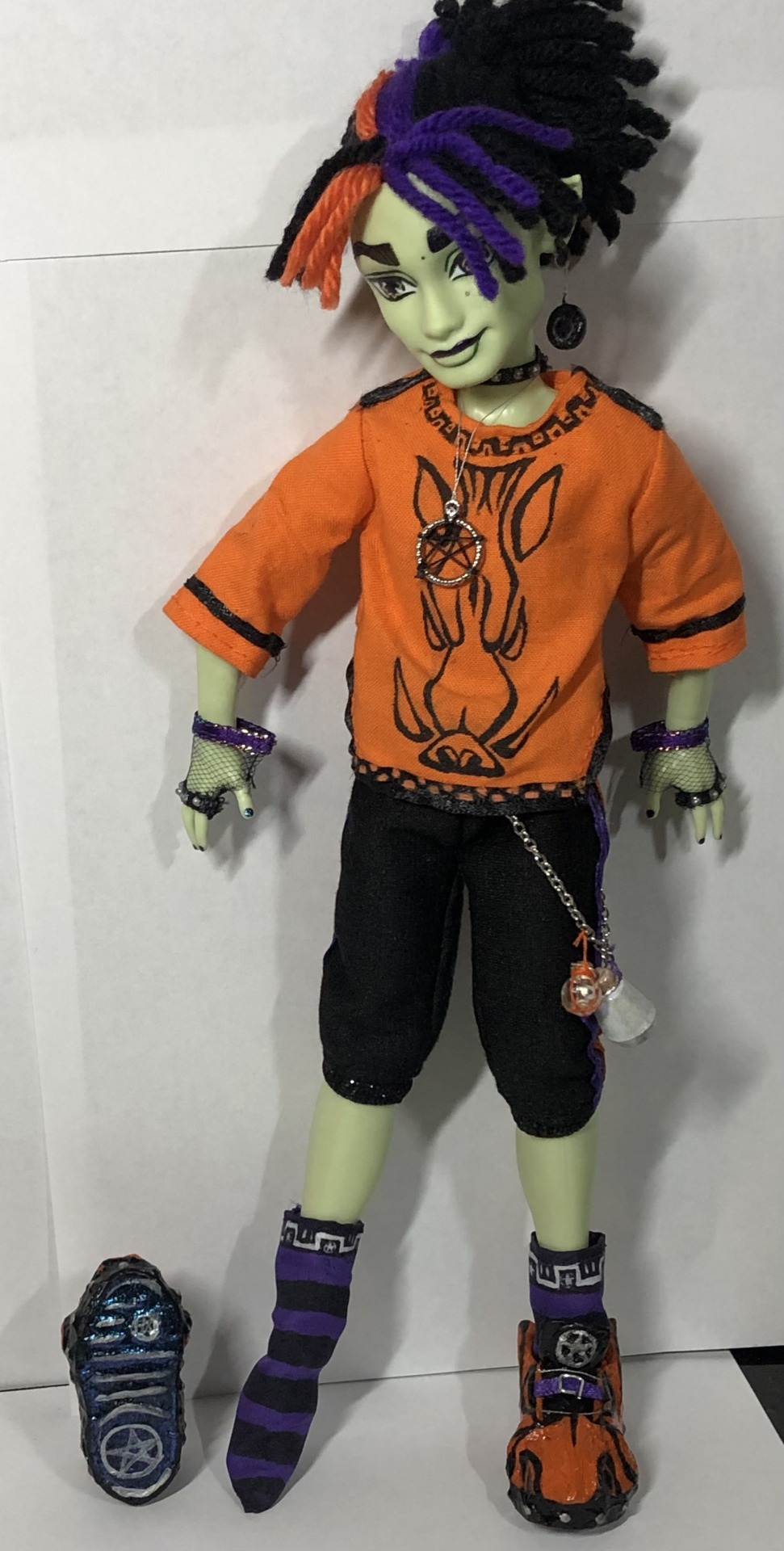
“Thanks for holding still Spelldon, and being patient with me.” I’m going to make another post or two with comparisons with his sister, some of my other customs, and some vampire that claims he knows him or something, heehee.
Oh yeah! My sketches for him:



#spelldon cauldronello#spelldon#monster high doll#monster high dolls#monster high#mh#doll custom#monster high custom doll#monster high custom#spelldon doll#spelldon Custom#customsbyaleta
515 notes
·
View notes
Text

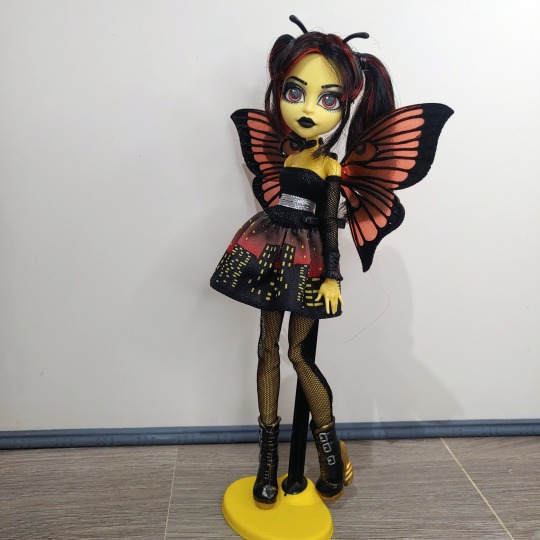


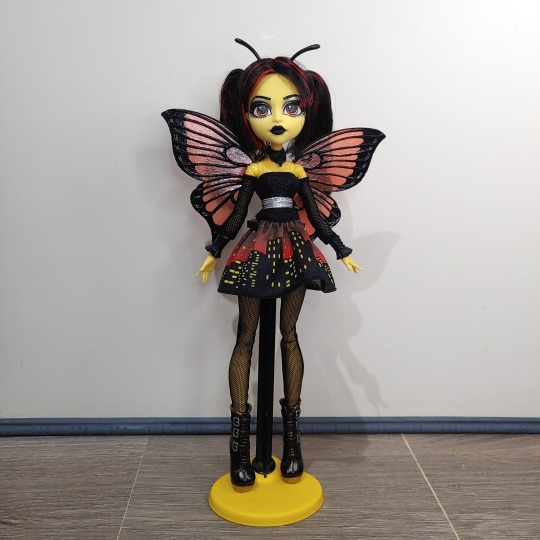



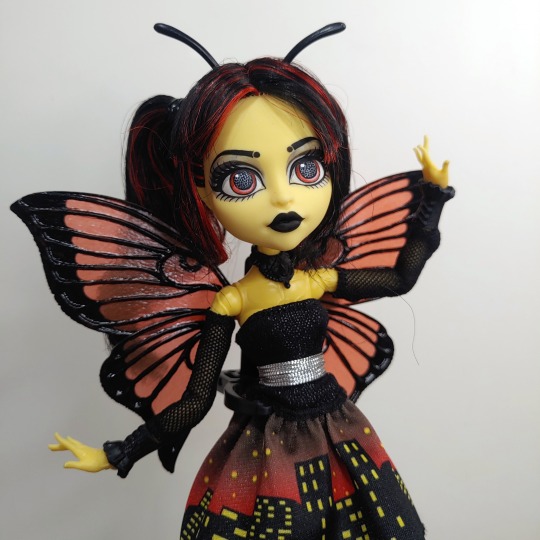


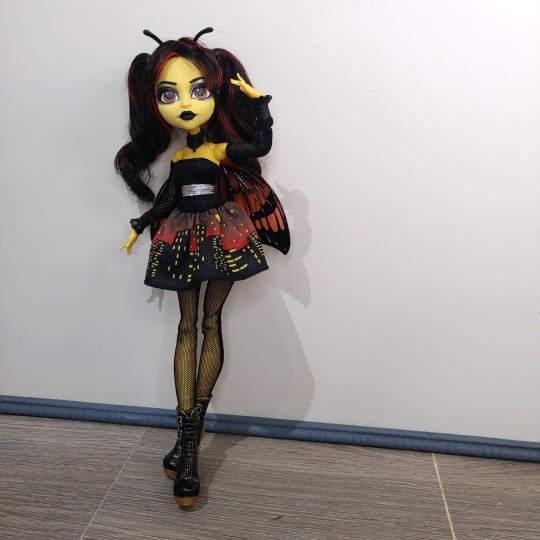
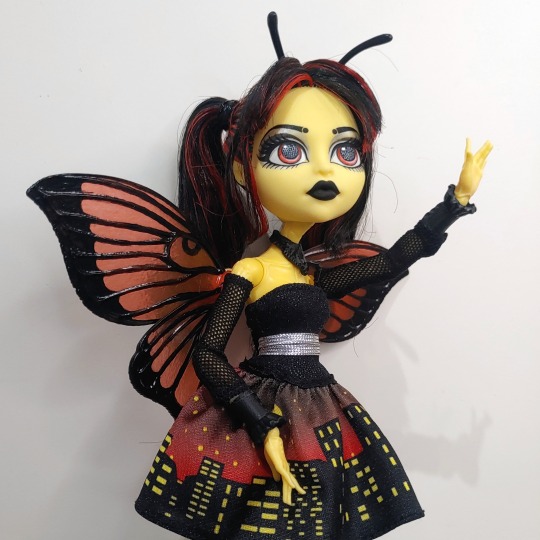

It took a while, but I did actually find a Luna Mothews in her City Ghouls 3-pack outfit since I prefer daytime looks for my MH collection rather than the gala looks the Boo York characters had.
Since Luna is a goth moth, I wanted to lean into that when accessorising her. I gave her two Casta Fierce's arm warmers, some Briar Beauty cuff pieces, an EAH necklace and some Raven Queen tights to help complete her look.
I also decided to give Luna curtain bangs rather than the puffy bangs she had because I really liked her movie design and didn't wanna cover up my paintwork.
Her shoes were given some gold paint to help break up the monotony of the piece and to show off its detailing as well.
Her wings were only painted in the back so I carefully detailed the front with black paint to help make her look more complete as well. I think having the black in front really helps the wings pop with her colour scheme.
71 notes
·
View notes
Text



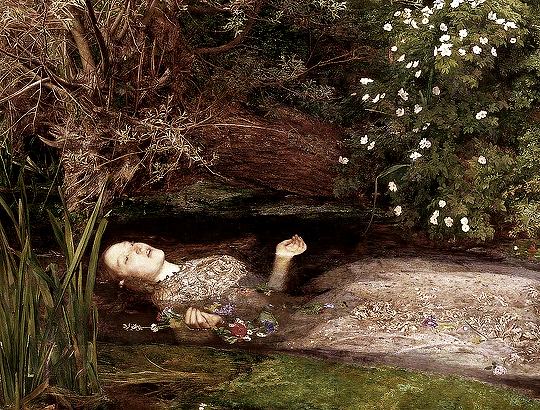








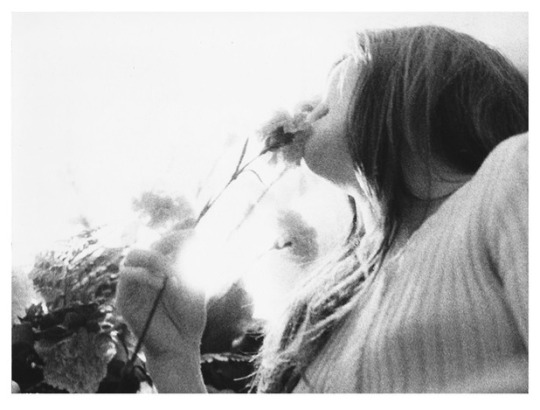



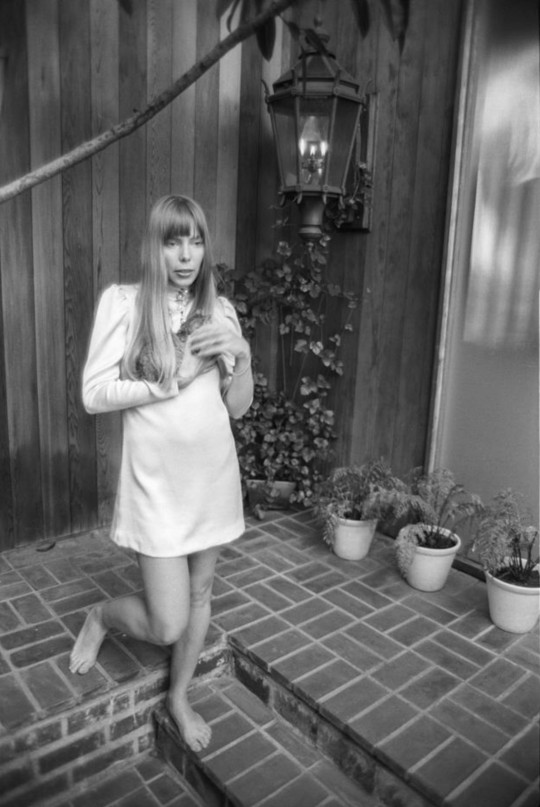







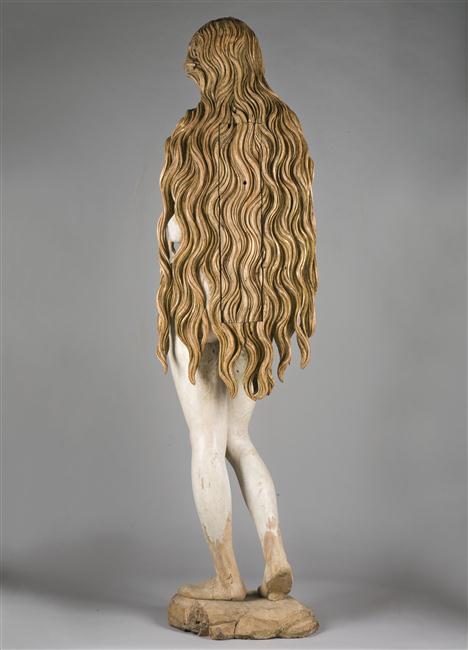
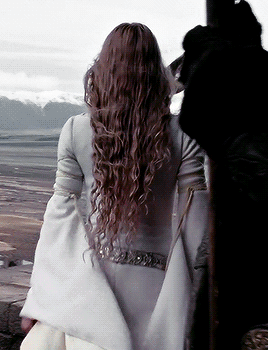

guinnevere by csn / Elizabeth: The Golden Age (2007) / Jean-François Jalabert, Galatée (detail) / BEAUTY by Rino Stefano Tagliafierro, Ophelia (1851-52), John Everett Millais / a song for jenny by humble pie / Joni Mitchell Led Zeppelin's California / Laetitia Casta wearing the iconic wedding dress made of roses during the Yves Saint Laurent fashion show, 1999 / L’Epistre d’Othea, 15th century (tree person painting) / going to california by led zeppelin / the rain, the park and other things by the cowsills / 'For the Roses' felt pen artwork of Judy Collins in the dressing room by Joni Mitchell / Judy Collins © artpepper.net / going to california by led zeppelin / Vogue Hong Kong 'Armour of Corture', March 2022 Model: Lauren Ernwein Photographer: Szilveszter Mako / Joni Mitchell, November 1970 © Joel Bernstein / Joni Mitchell, 1968 © Tom O'Neal / "East of the Sun and West of the Moon", by Kay Nielsen, 1914 / lady jane by the rolling stones / Mounia closing Yves Saint Laurent’s Spring/Summer 1982 Haute Couture show / Vogue Hong Kong 'Armor of Corture' March 2022 / Yves Saint Laurent on Dim Dam Dom (1968) / english rose by the jam / Yves Saint Laurent, Wedding Bikini, 1968 / Mary Magdalene, polychrome wood sculpture, Augsburg 1515-1520 musee du louvre / Lord of The Rings / Clive Arrowsmith Dress by Frank Usher (Queen 1970)
#yves saint laurent#joni mitchell#judy collins#csn#humble pie#led zeppelin#the cowsills#the rolling stones#the jam#this came out of nowhere !! sorry for the long post
49 notes
·
View notes
Text
like yeah the kids suit is cute but i want people that may not have the historical context to know the context: "pintura de castas" caste painting was an specific genre (? type(? of painting depicting the "mixes" of people because classifying people for their race was important to the viceregal society because they wanted to know exactly how much or how little of a human should they treat someone based on their racial mix and i think if you're smart enough can see why i am yelling this at the void . ok i should be up in 10 mins i didn't sleep shit . btw this is something we learn in like the 3rd grade and by we i mean like generations over generations
4 notes
·
View notes
Text
Encounters
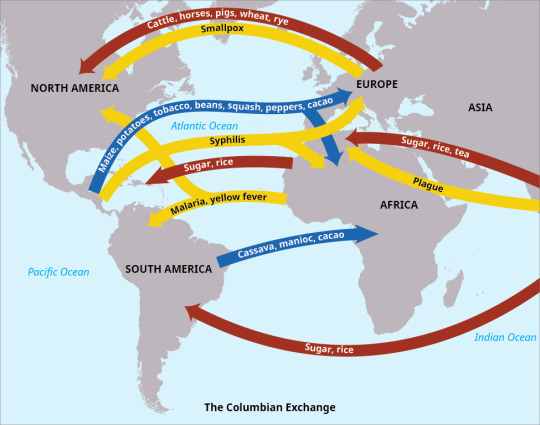
By the time the Spanish conquistadors invaded the Americas, the Mexica had transformed cacao beans into more integrated parts of people’s lives. Seeing such a profound effect chocolate has on Mesoamerican societies, they couldn’t stop themselves from incorporating that aspect into their home countries. People should ask if colonization is more than just territorial expansion? The encounter of cacao beans played an integral role in the Columbian Exchange, causing economic and cultural shifts and displacements of native populations.
Before the arrival of the colonizers, the natives living in Mesoamerica used cacao beans as a way of life, as currency, medicine, and social markers, and they created recipes. In the case of the Mexica, they used cacao beans as a form of currency, and certain items could be worth an amount of cacao beans. For example, in the video lecture title “Chocolate encounters” by Patricia Juarez-Dappe, “One good hen = 10 full cacao beans; 120 shrunken cacao beans, a turkey cock = 200 cacao beans, a forest rabbit = 100 cacao beans, one small turkey egg = 3 cacao beans, an avocado = 3 cacao beans, one large tomato = 1 cacao bean, and 4 ½ hours of work = 1 cacao bean” (Juarez-Dappe, 18:11). Cacao as a form of currency wasn’t its sole usage, people, specifically the noble class had prepared its seeds as a beverage to consume cold or it is speculated to consume it while hot. The most interesting usage of cacao beans was for medicinal purposes, in one instance, people used the bark, leaves, and flowers of the cacao plant to treat injuries and irritations on the skin. It is clear that cacao has become multi-purpose for a variety of things in everyday life. When colonizers stepped foot on Mesoamerican soil, not many had seen the value of the cacao but those who could had transformed the crop into something bigger back in Europe.
The three Gs: God, Gold, Glory was the mantra of Spanish colonizers and they utilized that to justify their destruction of the indigenous land and population on multiple sectors including biological, political, economic, social, and cultural. The last four sections had caused many demographics to decline, imposing new authority to create new economic systems and social hierarchy, the castas system. On a biological scale was the Columbian Exchange which caused “Widespread transfer of plants, animals, and germs between the Americas, West Africa, Europe, and Asia via Europe during the 15th and 16th centuries” (Juarez-Dappe, 29:54). The Columbian exchange caused a big shift in which human lives were changed, better or for worse. Those who had the power and the resources were able to cultivate wealth through cash crops and having indentured servants doing the work for them. Those being enslaved Africans, natives, who never got a lick of the mass wealth accumulated.
On the “discovery” of chocolate, Christopher Columbus was not able to see the value of cacao beans as he assumed it was almonds, and painted the responses the natives have towards the bean as them being ignorant and unsophisticated of what is really important and matters. But by 1519, Hernan Cortes truly did see the value of the cacao beans that many failed to see. He had started his own plantation to cultivate cacao beans, causing cacao to be the first cash crop produced in the “new world”. The first documentation of cacao in Europe was in 1544 served as a beverage. People in Europe did not accumulate this foreign substance with Girolamo Bezoni, a merchant and traveler, referring to it as a “drink for pigs”. Those who dared to consume the bitter beverage were considered going native or becoming uncivilized. Slowly but surely, time passed by where Europeans had found ways to consume chocolate to their palates. The Columbian Exchange by Rebecca Earle states, “The chocolate habit spread across Europe in routes carved out by the Hapsburg dynasty; aristocrats in Austria used their connections in Spain to commission private shipments of cacao, and artisans in Madrid were drinking chocolate for breakfast at a time when it was still a luxury item in England” (Earle, 350). The food and resources accumulated from the new world, had found its way into the lives of the Europeans in ways where people might reject it at first, but warm up to it eventually.
The introduction of cacao to Europeans had marked a significant turning point in history. For centuries, cacao had been confined to the regions where it naturally grew and those who had inhabited these areas had used the beans for religious, monetary, medicinal reasonings as well as to consume. But with the arrival of European colonizers, cacao had reached new heights across the pond. Initially, the Europeans had struggled to understand how a plant and its beans could be so important, yet over time they were able to understand it and found ways to consume it that fits their palates. But the journey to accept it was long as many Europeans tried to find new angles and ideals to accept the bean as it is.
Sources
Christensen, Mark. n.d. “Columbian Exchange.” Bill of Rights Institute. Accessed November 23, 2024. https://billofrightsinstitute.org/essays/columbian-exchange.
Earle, Rebecca. “The Columbian Exchange.” In The Oxford Handbook of Food History. United Kingdom: OUP USA, 2012.
Juarez-Dappe, Patricia. “Chocolate encounters.” YouTube. August 26, 2020. Video, https://youtu.be/G8BW-HHWI88?si=Oc_DaK5ahRUvTyeg
0 notes
Text
Old Myths in Different Packaging: How Pop-culture Affects Interpretation
LATI10
According to the National Council for Evaluation of Social Development policy (CONEVAL), 71% of Mexico’s indigenous population live in poverty, with 19.8% of the population between ages 30 and 64 not knowing how to read or write (Evaluation of Social Development Policy). Mexico’s indigenous are disproportionately affected by displacement, lack of opportunities, racism, and poverty, in part due to how they are misrepresented or outright erased both historically and in modern media.
Through explicit representation, such as with characters like La India Maria, and implicit representation that hollowly homogenizes the Mexican experience into a mestizo, “mixed” identity such as The Book of Life and Disney’s depiction of Latin America through characters like Donald Duck, Mexico’s real-life indigenous people are being actively silenced, infantilized, and erased.
As a result, we as consumers grow to believe the racialized narrative began by colonial, casta society that Mexican society has assimilated its indigenous, attributing to their erasure, and those that remain are a backwards group that just hasn’t yet “got with the program.”
A History of Erasure

casta painting
Anibal Quijano’s Coloniality of Power provides a framework for this discussion, in which marginalized groups are encouraged or forced to assimilate into universal identity. This identity is based around the historical context in which Latin America fell under the authority of European rule, its societies restructured into a racial hierarchy that benefitted white Europeans and denied important resources that would allow for social and economic successes to marginalized groups, including the indigenous. This restructuration naturalized the idea of European dominance and the subservience of people of color and is kept alive through its modern depictions until they are associated with reality. But first, some historical context.
After the implementation of Spanish colonial rule on an indigenous population decimated by European-born disease and Black population forced into enslavement, society was restructured socially and economically along capitalistic racial lines, in which only white, wealthy Europeans could develop more wealth and power. Quijano states, “This was, above all, through a quasi-exclusive association of whiteness with wages and, of course, with the high-order positions in the colonial administration. Thus, each form of labor control was associated with a particular race. Consequently, the control of a specific form of labor could be, at the same time, the control of a specific group of dominated people” (Quijano, pg. 537). As a result, only Europeans could advance socially, and were cemented in their positions as the top of the social hierarchy through a system built of exploiting Black and indigenous people.
The consequences of this framework on indigenous communities can be seen by the conditions most face in modern-day Mexico, most being displaced, in poverty, and denied access to formal education. In the media, dark skin and indigenous are denied spaces, and in films and pop-culture, they are dehumanized and infantilized. These trends stem from racialized colonial society, as further described by Quijano, “The fact is that from the very beginning of the colonization of America, Europeans associated nonpaid or nonwaged labor with the dominated races because they were “inferior” races. The vast genocide of the Indians in the first decades of colonization was not caused principally by the violence of the conquest nor by the plagues the conquistadors brought, but took place because so many American Indians were used as disposable manual labor and forced to work until death” (Quijano, pg. 539).
This framework will be applied to how pop-culture and how it represents marginalized communities, especially regarding how stereotypes and misconceptions stemming from the coloniality of power are used to convince the greater public that their depictions are “truths.”
Explicit Indigenous “Representation...”

The aestheticized images of Mexico and its indigenous in cinema does work to both uplift working-class voices, but also harms by putting out a narrative of homogeneity– that the entirety of Mexico’s working class comes in the same image, fits in the same box, and can be portrayed using the same buzzwords and character tropes to be easily consumed by audiences instead of portraying the indigenous experience with honesty and nuance.
“La India Maria” played by actress and director Maria Elena Velasco over a decades-long career, became a household name in Mexican families as the underdog character of various movies, but also a major representation of how indigenous women were thought to look like and behave– often to the detriment of real-life, living indigenous people.
Characterized by her naivety, traditional dress, and limited formal education, La India Maria is portrayed as the backwards indigenous woman comically oblivious to urban Mexican society. The socioeconomic disparities faced by the indigenous working class make it so that affording and receiving a formal education is incredibly difficult, but it is more harmful that characters like La India Maria are infantilized, her quirks and “nativeness” comical.
Such depictions feed into a prejudiced narrative associated with colonial notions of race and social hierarchy– portraying indigenous in a way that makes them seem like wayward, aimless children in need of assimilation into the bettering system of European colonial society.
...And Their Implicit Consequences

When The Book of Life (2014), Mexican children and their families were happy to find a fun, charming movie that related to their lives and culture, but there was one interaction that left a bad taste in the mouths of many who expected proper representation by a film embracing Mexican culture. Attributing further to this infantilization of indigenous people are the interactions between two characters: Jorge Sanchez, a conquistador, and Carmelo Sanchez, an Aztec warrior. Jorge is portrayed as refined, singing opera songs quoting poetry and often mocking the burly and foolish Aztec, calling him a “savage.”
The portrayal is uncomfortable, and their scenes together are meant to be a dismissive punchline, but what is more concerning is how their roles seem to be naturalized. The “cultured and clever European” and the “dim-witted native clueless to modern life” feel like familiar roles but contribute to a misconception that the indigenous during the time of the conquering of the Aztec empire were foolish, their conquest inevitable. With both of these characters being representative of Manolo's (the main hero) oldest ancestors as part of his European-Indigenous, mestizo heritage, the audience who can relate to him instantly associate one identity more positively than the other.
But no, as described in the Throughline podcast episode “Tenochtitlan: A Retelling of the Conquest,” covering Barbara Mundy’s book The Death of Aztec Tenochtitlan, The Life of Mexico City, which provides a sincere overview of the fall of the Aztec empire, the Aztec people were highly educated, their city a technological marvel. Carmelo Sanchez, as a stand-in for main character Manolo Sanchez’s Aztec ancestors, is instead depicted as a hulking man-child, completely disregarding historical fact and instead perpetuating the myth of European superiority, especially regarding the conquest of ancient Mexico.
The fact that this notion continues with modern indigenous through the depiction of characters like La India Maria (and The Book of Life, released less than a decade ago!) despite modern historical discoveries alludes to a conscious misrepresentation of indigenous people in favor of preserving a status-quo depiction of Eurocentrism as favorable against the “backwardness” of indigenous practices.
Reestablishing a Hierarchy Through Popular Characters

la Virgen de Guadalupe (right) and her Nahuatl counterpart, Tonantzin (left)
Just why are narratives such as this so harmful in popular media? How could figures like Donald Duck, when he travels to Aztecland and Inca-Blinca (fit with all the stereotypes of Latin America possible), be weaponized? How and why are industries such as Disney a threat?
If the intended audience is the working class of underdeveloped countries, who read the comics and see members of a modern metropolis explore and exploit mythical backwards lands, then the consequences are serious. Ariel Dorfman and Armand Mattelart's article, "The Culture of Imperialism," functions to associate the formation and maintenance of a racial-ethnic hierarchy through easily accessible and widely consumed media, such as Disney. They describe this phenomenon, stating, “The primary reason is that [Disney’s] products, necessitated and facilitated by a huge industrial capitalist empire, are imported together with so many other consumer objects into the dependent country, which is dependent precisely because it depends on commodities arising economically and intellectually in the power center's totally alien (foreign) conditions… Underdeveloped peoples take the comics, at second hand, as instruction in the way they are supposed to live and relate to the foreign power center” (Doc No. 102, 1972, Holden and Zolov. 2011).
Misrepresentation in this form, rampant with harmful stereotypes, uses caricatures that categorize real-life groups of people in ways that make one group (often the European, “modernized” character, who often wins at the end of the day) seem like a positive role model to look up to, while the other group is a cautionary tale to warn young audiences of (the backwards, clueless stand-in for indigenous working class people, who often loses to the other character). As a result, real life people who find themselves relating to the second character type are influenced to change themselves and assimilate to a different identity, one prioritized by a white, Eurocentric narrative, perpetuating a status quo that inspires feelings of shame towards an indigenous identity. These tropes and characterizations may seem like harmless “aspects of their time,” but they perpetuate in their ability to influence modern audiences with movies like The Book of Life and Coco.
The lack of proper representation– within politics, media, or even pop culture– means indigenous issues, such as poverty and displacement, too often go unnoticed, and commodifies the sympathy of the greater public by controlling the opinions of their viewers as well as the types of issues they are exposed to. They become desensitized to the ails of a seemingly backwards group of people that refuse to adapt to modern times, as if that will magically solve the world’s problems, and structures aren’t in place that systematically prioritize the wellbeing of certain groups over others. Such ways of thinking are ignorant, in a way that is much more genuine than the products of stereotyping like La India Maria or Carmelo Sanchez.
1 note
·
View note
Text
10 Recent listens
Tagged by @malcolm-f-tucker
I listen to music all day at work so I opened Spotify recently played and picked the songs I remember hearing
labour - Paris Paloma
Bygones - Dolly Parton
La Wally / Act 1: “Ebben? Ne andrò lontana” ( I distinctly remember hearing like 3 different versions )
Cycle of Hurting - Staind
One More Time - The String Cheese Incident
hazelton - Justin Vernon
Francesca - Hozier
Norma Act 1: Casta Diva ( Renee Fleming, Cecilia Bartoli and Maria Callas versions bc i can’t decide who sings it best )
Rivers and Roads - The Head and the Heart
Paint - The Paper Kites
Thanks! it was fun to do these tagged games again!
0 notes
Text
Walt Whitman Paints Beautiful Poetry and a Deathless Attachment to Freedom
In his intro to Leaves of Grass, Walt Whitman undoubtedly casts a net over the immense semantics of liberty and posterity in the Constitution. #whaltwhitman #poetry #quotes #americanwriter #american #poet #whitman
If there ever was a writer who weaves vivid tales of American liberty and posterity as represented in the preamble to the Constitution, it is without a doubt, Walt Whitman. In his introduction to Leave of Grass, Whitman casta a net over the immense semantics of liberty and posterity as presented by our founding fathers: “We the People of the United States, in Order to form a more perfect Union,…
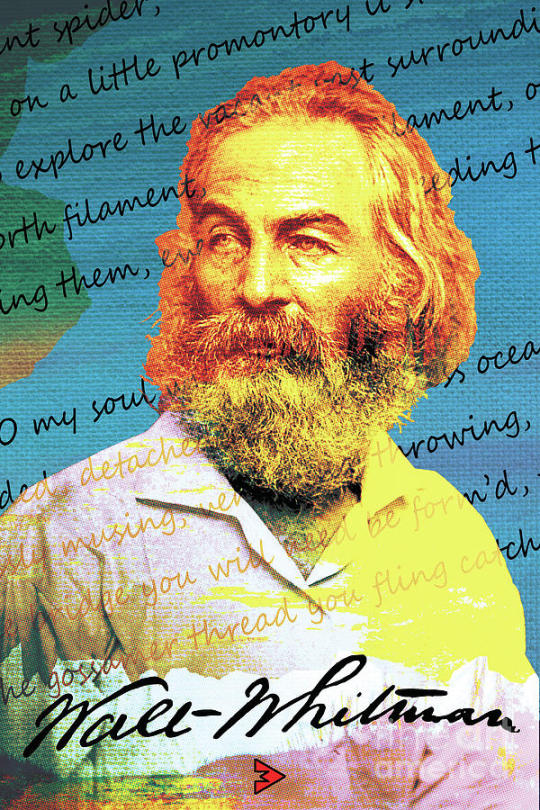
View On WordPress
0 notes
Text
Spelldon and Friends

My first post focused on Spelldon and breaking down his outfit pieces. This one will focus on him and some other Monster High dolls….including a vampire….more under the cut because I took a lot of photos!!
From Valentine’s Diary: July 2nd
“While attempting to hide in the shadows, I bumped into a student I didn't recognize. He said his name was Spelldon Cauldronello. He had only been at MH a couple of weeks as he had been traveling with his older sister. Meeting him totally made me space out and forget to send a text that was supposed to help Clawd. He asked if I went to MH, and I said I was just visiting, but I would love to go to MH if I can. He said he'd keep me up on the groanings on around school if I wanted, so I gave him my number.”

I kept seeing fanart of Spelldon dropping a book and Valentine and Spelldon reaching for it at the same time that I thought it had happened in the diaries too, and decided to quickly pose them like that. Valentine is completely and instantly love struck with Spelldon. Spelldon is lightly curious at this dapper looking southern-drawling vampire.

It didn’t take them long to start trying to hold hands. It was a bit tricky, but they managed. They have started to flirt incessantly.

They seemed to like dancing (Valentine has had many dances over the centuries with “young fillies” he had tried to steal love from, but this felt so much different. Spelldon hasn’t danced many slow dances, but meeting Valentine has made him want to start learning).

Still working on hand holding….

Valentine is pretty stealthy (like most vampires), and has surprised Spelldon quite a few times when sneaking in for a surprise kiss on the cheek. Spelldon lightheartedly threatens to give Valentine a potion that make his footsteps as loud as a giant’s.
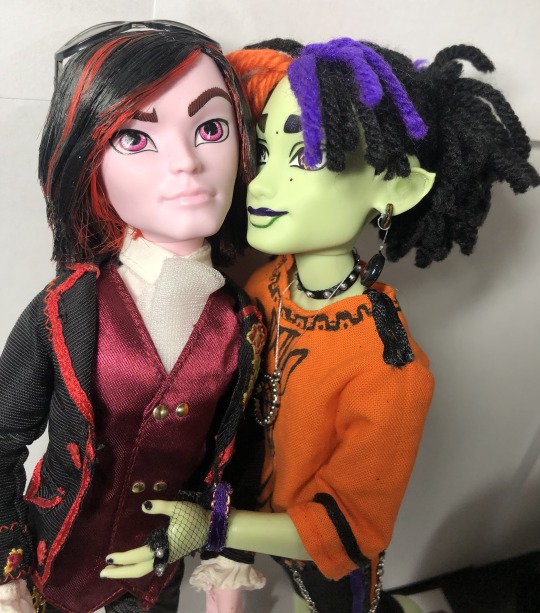
Spelldon might have used an invisibility potion to finally manage to sneak up on Valentine and surprise him with a kiss on a cheek. Valentine tells Spelldon he doesn’t need to try and surprise him, he would gladly take a kiss from him anytime.

“Who is this?!” Spelldon looks up and Valentine thinks he remembers hearing that voice from the radio…..
Casta has entered the chat.
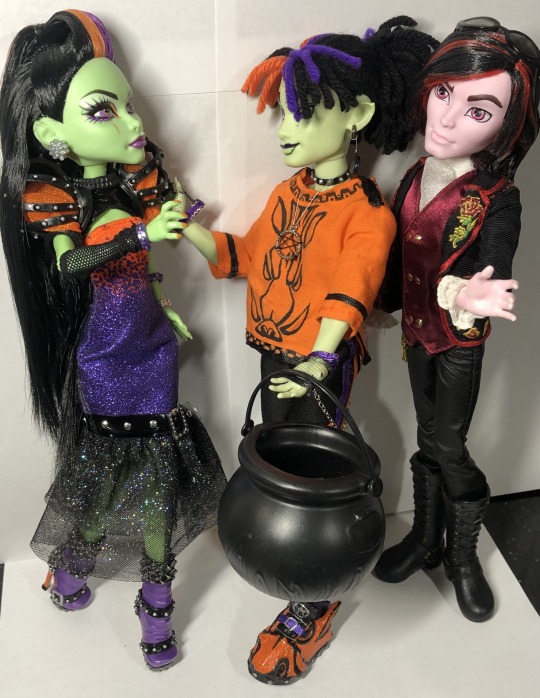
Casta is still getting used to her younger brother dating an emotion-feeding vampire (especially someone who was as notorious as Valentine -she might be a famous singer, but she knows a fiend who knows a fiend who knows a vampire who has had a run-in with Valentine). But she’s proud to see her little brother thriving at Monster High She trusts Spelldon, and is happy to see Spelldon’s boyfriend tagging along and helping Spelldon gather and shop for potion supplies, and enjoy being a teenager (instead of always being on the road).
Valentine is still a bit nervous around Casta and all of her star-power (she may have threatened to turn him into a piglet if he hurts her brother. Spelldon said she was kidding and it’s a family joke).
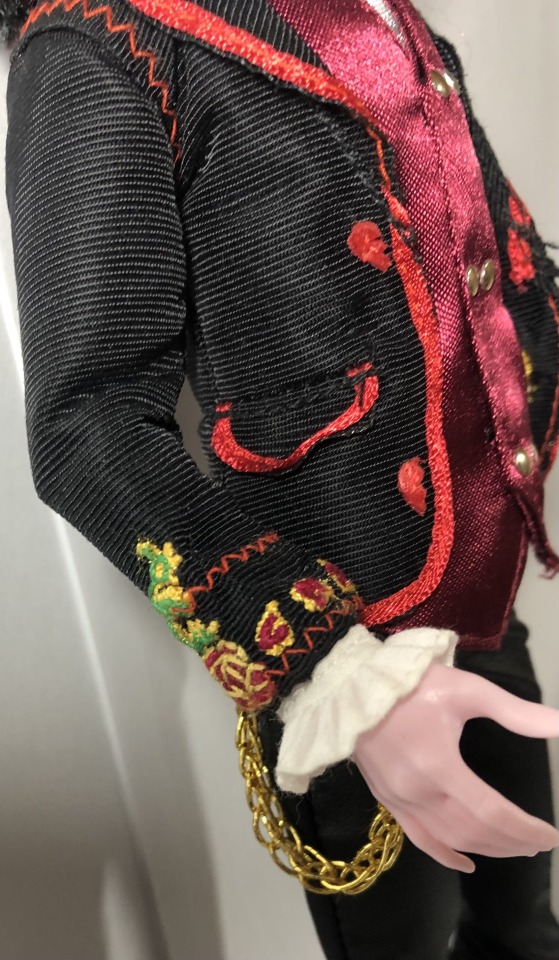


I had forgotten that I had added some detail to my SDCC Valentine to try and make him closer to his film appearance. I had cut his hair (although he need to be dipped in some LA’s Totally Awesome as his hair is very gluey), add some paint to his earrings, glasses (and make them sunglasses with a paint wash) and shoes (I made the buckle into broken hearts and made the broken heart jacket buttons). I also added some extra gold and green embroidery to his lapel and cuff and some extra ribbon around his collar too.

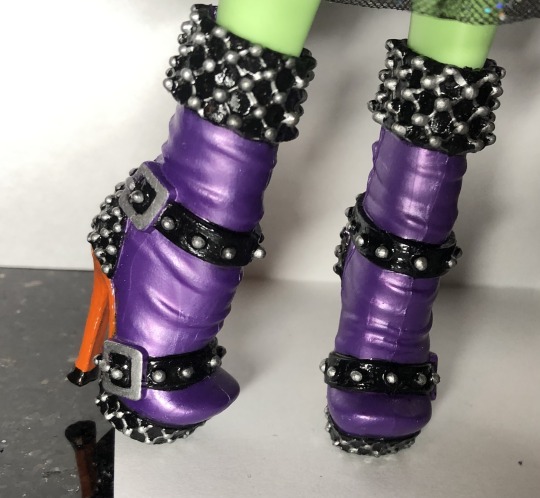
Spelldon and his big sister Casta Fierce. I didn’t realize how much darker green she is until I got her out of storage (I had also painted her nails and boots too when I first got her). She also needs to be de-glued in some LA’s Totally Awesome. They look so good together, eeeeee!!!

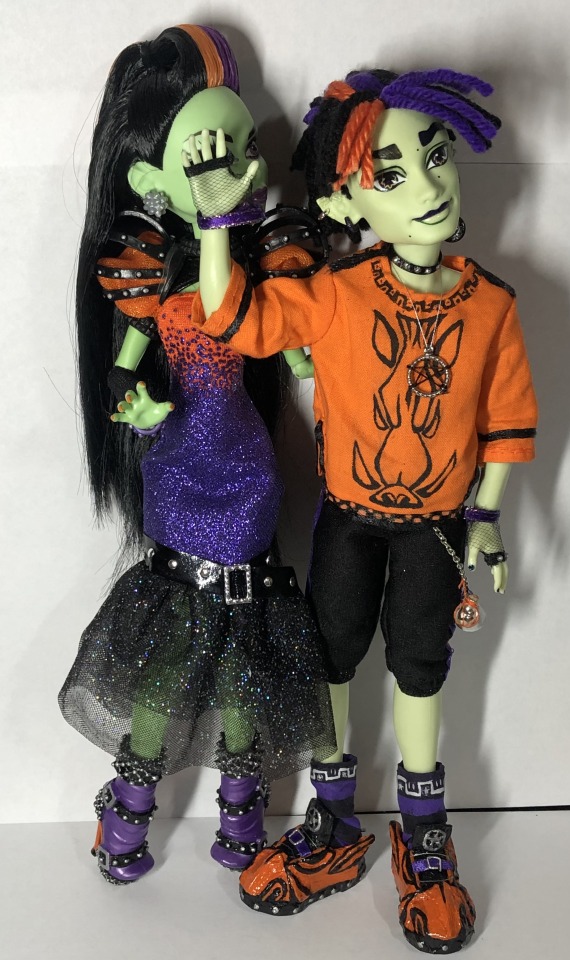
Spelldon and his sister again (sans jacket). Oof! He might have been distracted by his boyfriend off camera.

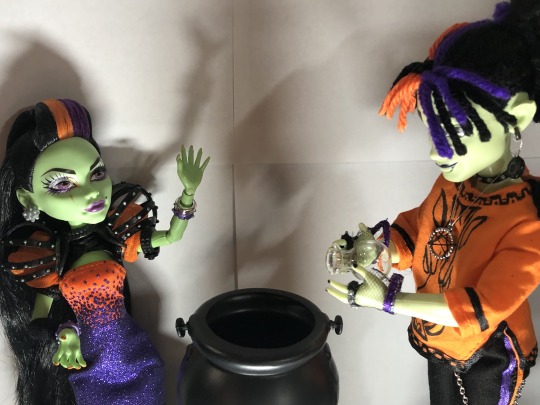
Spelldon and Casta practicing their witchcraft while she is in town. They are not the best at fortune telling, but their mama would be proud they’re keeping up with their studies. Casta is the best at reciting magical incantations, while Spelldon is happy to be adding the ingredients. “The whole bottle should do it….I’m pretty sure.”
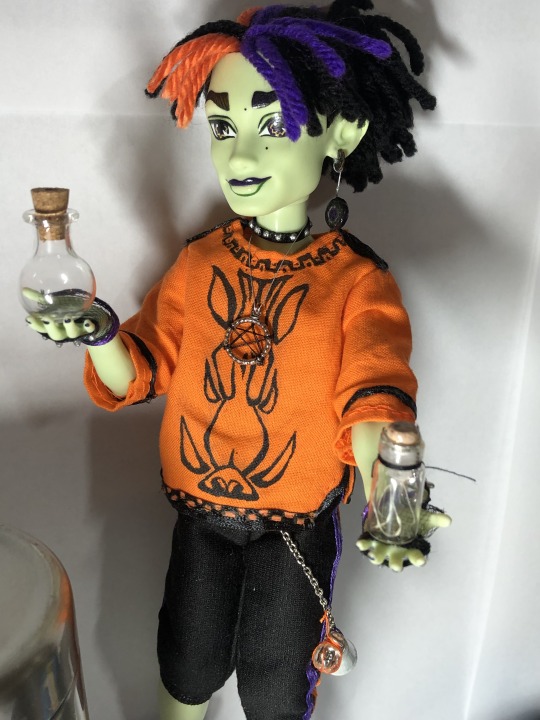
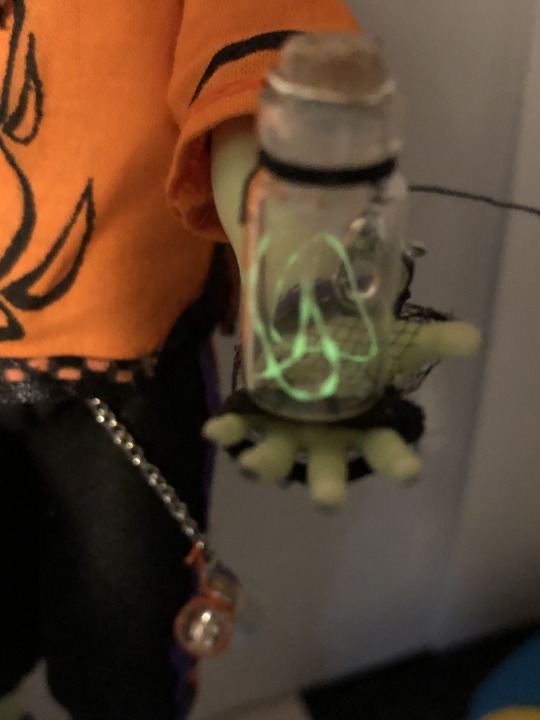
“This one has an invisible gas inside. And this one is a part of a rare ‘glow worm’ from a cave Valentine’s family had visited in Transylvania.” I was going to have the glow in the dark potion also hang from his belt, but it was too much weight and kept falling off.

“You’ve grown quite the collection of ingredients Spelly.”
“Thank you. I miss being on the road with you, …but it’s nice living in one place for a while. I’ve been able to safely practice my magic at Monster High. You’re right, they have a great magic course here. I’ve made new friends….and…someone who is more than a friend….”
Casta and Spelldon promise to keep Fate-timing each other at least once a week.
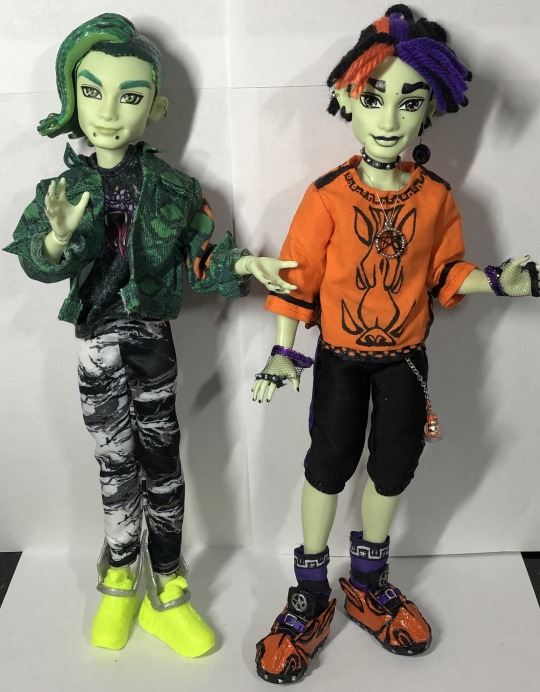
My G3 Deuce (don’t mind his glasses being off, all the other dolls have been told not to look at him, and visa versa, for this quick photo shoot, and the photographer was only stoned for an hour afterwards) and Spelldon (who used the same body and sculpt). Spelldon thinks Deuce looks kinda familiar, while Valentine is appalled at the thought that Spelldon might resemble Deuce.
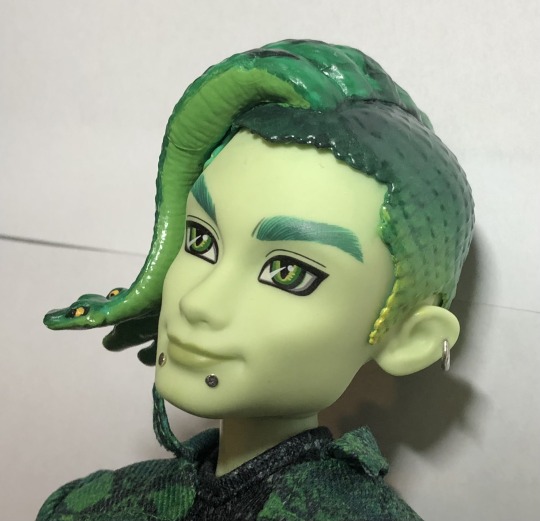
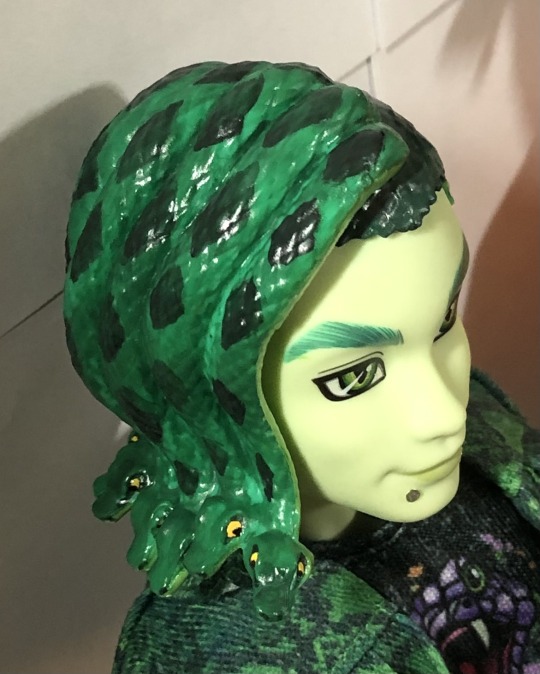

(G3 Deuce’s hair repaint - I missed the gradient G1 Deuce had and G3 Deuce has a much more detail on his snakes in the show…..I don’t care for the paler plastic green his doll comes with).
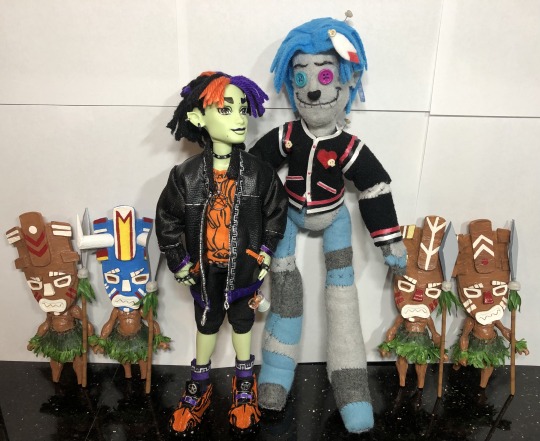
And finally, a group photo of Spelldon and my other Monster High customs. Welcome to the family Spelldon!
#customsbyaleta#spelldon doll#spelldon cauldronello doll#spelldon#spelldon cauldronello#casta fierce#monster high#mh#monster high doll#custom doll#monster high custom#monster high custom doll#valentine#kieran valentine#valentine x spelldon
131 notes
·
View notes
Text
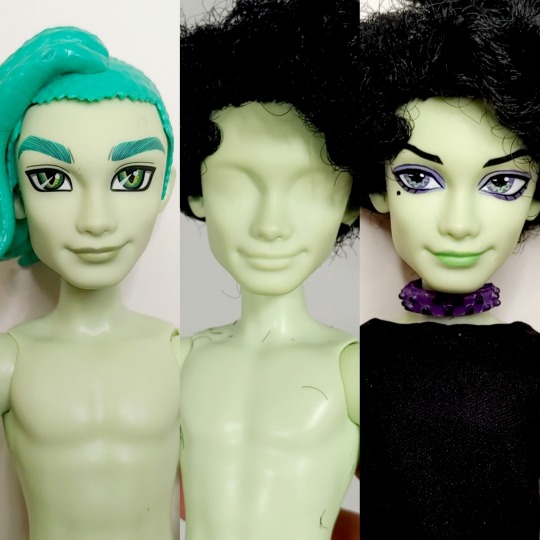
I was always sad G1 ended so abruptly the way it did because there was several things teased in the diaries at future subplots including Cleo's mother being found, Hexiciah coming back, Finnegan Wake and Gigi Grant having a romance, and of course, Spelldon Cauldronello, Casta Fierce's brother and a love interest for Kieran Valentine.
I've always held off on making a Spelldon because I didn't feel like there was a MH boy sculpt that suited Casta's features but when G3 Deuce came out he was perfect with the right skin tone.
Since Spelldon never had a canon design I decided to go and do my own thing as Casta Fierce's design was based on celebrities who, outside of styling, would have naturally curly hair, as well as the implication of Cauldronello being from the more Mediterranean part of the world with curly hair. So I leaned into it and gave him messy E-Boy style hair.
His hair is nylon from @customdollhairAU.
His face paint is inspired by Casta Fierce's but I didn't want to incorporate the same bright orange and purple colours as I feel Monster High has done really well at making each set of siblings super distinct in terms of styling and colour scheme. So Spelldon's is more subdued and quiet since he doesn't explicitly say who his sister is.
140 notes
·
View notes
Text
a new article about palais garnier! :D
An Opera House Inspired by More Than Music
The architecture and location of the Palais Garnier are intertwined with the history of France and Paris (and a famous phantom).
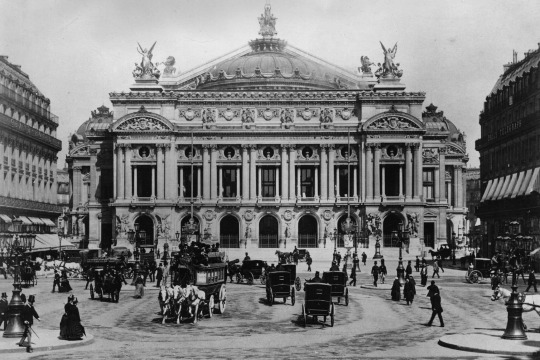
By Sam Lubell
Jan. 24, 2023
Showcasing more than 400 performances of opera, dance and music each year, Charles Garnier’s Paris Opera, inaugurated in 1875, is a true cathedral of culture.
A promenade through its rooms is a theatrical experience itself, revealing ornate marble columns, bronze statues, crystal chandeliers, and paintings and frescoes. But the Palais Garnier, as the building is known, also holds secrets, from design quirks to haunting tales. Here are some facts about the building.
Charles Garnier, the architect, was the last one shortlisted for the project.
Emperor Napoleon III started a competition for an “Imperial Academy of Music and Dance” in December 1860. Five finalists were chosen from more than 170 proposals. They were ranked, and Garnier came in last. With little to lose, he changed his plans, creating a monumental structure layered with imposing arcades, colonnades and flanking pavilions, crowned with a dome and a pedimented tower. “He was using a classical language, but in an eclectic, much freer, and much more expressive way,” Christopher Mead, author of “Charles Garnier’s Paris Opera: Architectural Empathy and the Renaissance of French Classicism,” said in an interview. Garnier’s win shocked the establishment, Mr. Mead said, but worked with the emperor’s effort to cast himself as a reformer.
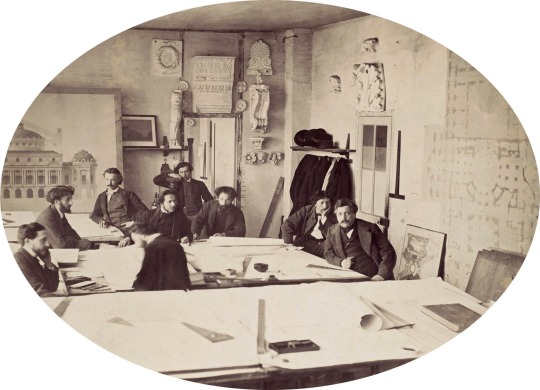
There is a “lake” under the opera house.
When digging the foundations, workers hit a hidden arm of the Seine, causing water to flood the site. It was impossible to remove all the water, so crews had to contain it with a massive concrete reservoir with a vaulted ceiling from which water is still pumped today. The so-called lake was dramatized by Gaston Leroux, author of “The Phantom of the Opera,” who made it the stomping grounds of the Phantom. Mr. Mead was mesmerized by a visit. “You can see why it inspired Leroux,” he said. “You could invent a whole world there.”
The falling chandelier in “The Phantom of the Opera” was based on a real event.
In 1896, during a performance of Étienne-Joseph Floquet’s opera “Hellé,” a short-circuit caused a counterweight from the chandelier to fall, killing a woman in the audience and injuring several more people. Reporting on the event was Leroux, then a journalist with a Paris newspaper. In “The Phantom of the Opera,” it is the Phantom who dislodges the chandelier from the ceiling.
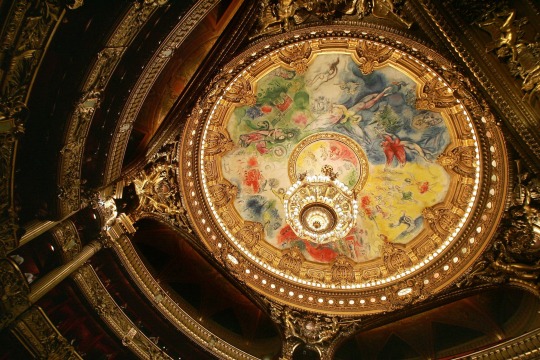
So was the Phantom (sort of).
Leroux first published his novel as a serial in 1909 and 1910. In an interview, Isabelle Rachelle Casta, author of “The Work of ‘Obscure Clarity’ in ‘The Phantom of the Opera’ by Gaston Leroux,” said its characters and story were invented but drew from real-life elements in addition to the lake and the falling chandelier. The Phantom himself was inspired by a pianist who was disfigured after an 1873 fire at the Palais Garnier’s precursor, the Salle Le Peletier, and from an assistant to Garnier who disappeared during construction. “Leroux took all of these stories and he created one of the most important stories of the 20th century,” Ms. Casta said.
An attack partly inspired the construction.
In 1858, Napoleon III and his wife, Empress Eugènie, went to the Salle Le Peletier for a concert. As they arrived, three bomb blasts threw their carriage onto its side, hurled spectators into the street and blew out windows in the opera house and surrounding buildings. Eight people died, but the emperor and empress survived. The mastermind of the plot was Felice Orsini, an Italian revolutionary who had been critical of Napoleon III for not supporting his pro-republican cause. The emperor, already hoping to replace the Salle Le Peletier, decided to build a new opera house in a more open area with a secure entrance. But he never saw it completed: He died in 1873.
Garnier requested that no trees be planted on the main road to the building.
Baron Georges-Eugène Haussmann, who oversaw Napoleon III’s transformation of Paris, lined all his Grands Boulevards with trees, except for one: the Avenue de l’Opéra, a half-mile stretch from the Louvre to the opera house. Garnier asked for this to maximize his building’s sense of monumentality and to not block views of it. “He wanted a building that announced itself to the public,” Mr. Mead said. “This was a building for them.”
A version of this article appears in print on Jan. 25, 2023, Section A, Page 9 in The New York Times International Edition
0 notes
Photo
First of all, we have understand the definition of the word mestiza (or mestizo for males).
The Casta paintings from the 17th and 18th centuries show the wide variety of racial backgrounds of the people of Mexico, and define the terms used for the children of many pairings.

De español e india, mestiza (of Spanish [father] and Indian [mother], mestiza [daughter]
Prior to the Mexican Revolution (1910-1920) mestiza (or mestizo) was defined as someone of mixed Spanish and Indigenous parentage. The people who first came to Mexico in the 1500s were mostly men. They intermarried with Indigenous women or took Indigenous women as mistresses, and fathered children with them.
A little bit later, Spanish women and girls came to Mexico with their husbands and fathers. The children of these Spanish mothers and fathers, born in Mexico, were given the name peninsulares. They were the first Mexicans of purely Spanish descent, and held influential positions in the Church and the government.
In the Josefina books there are a couple of characters who are Indigenous. One of them is Josefina's best friend, Mariana, who is Pueblo Indian. Another is Teresita, a Navajo woman who is Josefina's aunt's servant. American Girl makes the distinction between them as Indigenous people, and Josefina's family and neighbors. In the Looking Back sections of the main series, and in Welcome to Josefina's World, the text refers to people like Josefina's family and their neighbors as "settlers." Their ancestors had come to Mexico so long ago that they were no longer truly Spanish, but they were distinct from Indigenous people like the Pueblo, who by Josefina's time were allies, and tribes like the Navajo, who were often enemies of the settlers.
Mestiza currently is a term which can be used to describe all Mexicanas, as the definition of the term has changed to reflect a more uniform, nationalistic idea of race and ancestry. Which is not necessarily a good thing, as the myth of a universal ancestry and heritage erases the diversity of cultures and backgrounds which make us unique. Some people of mixed Indigenous and Spanish descent feel that mestizo/a as a term for all Mexicans erases the painful and complex history of their ancestors.
It is important to note that race is complicated for Latinx people and there are many factors that can affect how a person chooses to identify. It also varies by country and language, because different terms were used in Mexico, versus other countries, such as Brazil, for example. Many Latinx people who are white (including myself) do not identify only as white because identifying as white erases their Latinx heritage and culture or places them within a group where they feel they cannot identify with other members due to different cultural heritage and life experiences. The fact that the term racism is often used to refer to actions against Latinx people, despite a more accurate term being hispanophobia also complicates matters.
Additionally, the centuries old racism towards Black and Indigenous people still affects beauty standards in Mexico today, and some mestizos choose to identify as being of pure Spanish descent to raise themselves above people they see as "lower" due to their identity as mestizos, or Black.
As a Mexican-American living in the United States, and someone who studies history, I also know that defining the race of Mexicans has been a problem Americans have attempted to tackle for centuries. Oftentimes, Americans have relied upon familiar racial categorizing - Black, white, Native American, mixed - which doesn't really work because the social positioning of each group was different in each country.
The differences of dress, customs and language, in the Mexican Republic, make known the heterogeneousness of its population, which may be divided into three principal groups; viz, the white race and more direct descendants of the Spaniards, the mixed race and the Indian race. - from The Republic of Mexico in 1876 by Antonio García Cubas and George F. Henderson (a book printed in Mexico but written for an American audience; the information is not necessarily 100% accurate but it's useful for understanding perceptions from the time period)
I realize that I might sound a little extreme in my insistence that Josefina is white, but I don’t want American Girl being given credit for including indigenous heritage where there is no evidence of any. The only historical character in the Historical Character doll line who has Native American heritage is Kaya. If you decide that your Josefina doll is mestiza, that’s awesome and I fully support that, but it's not something that is part of Josefina's heritage in her official backstory created by American Girl.
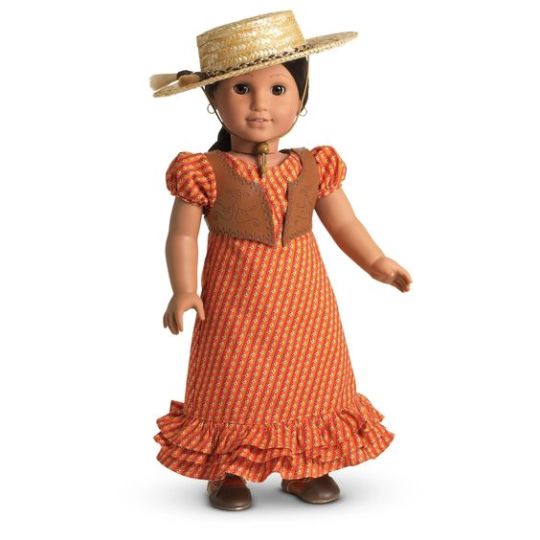
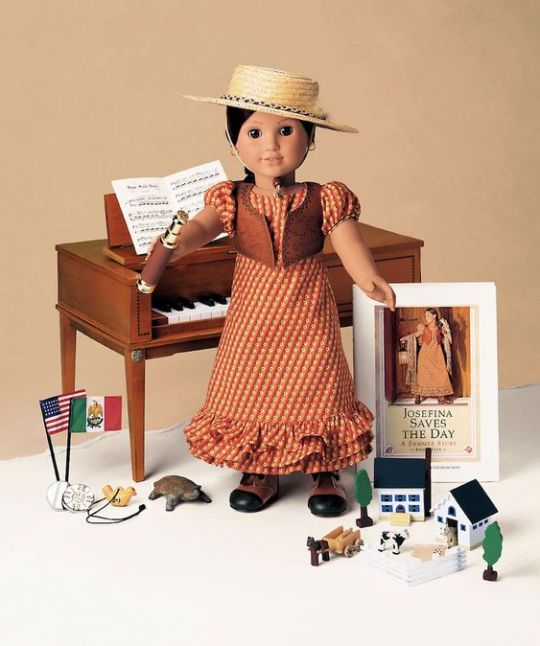
Again, Josefina’s summer dress mainly takes inspiration from 1824 fashion:

(Whitaker Auctions)
It was really hard to find references for her riding accessories, but the bolero and sombrero resemble a traditional Spanish riding habit:
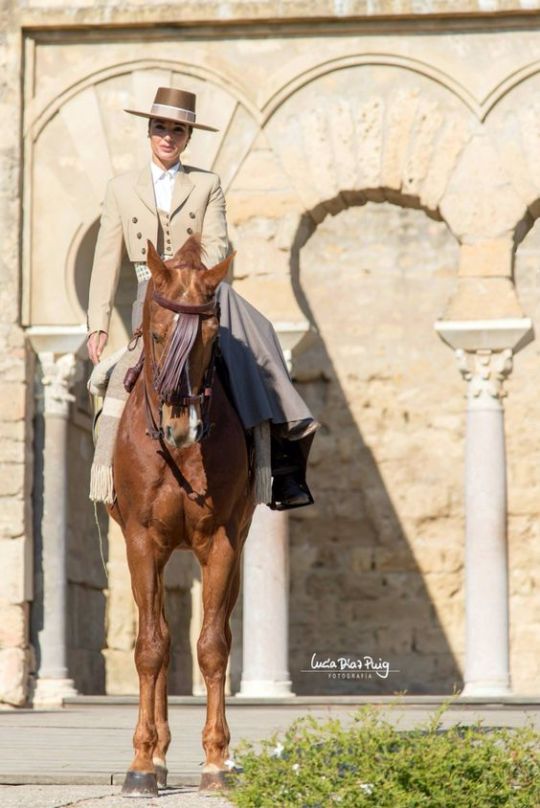
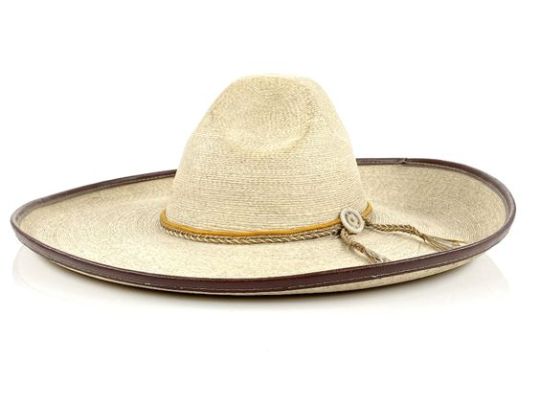
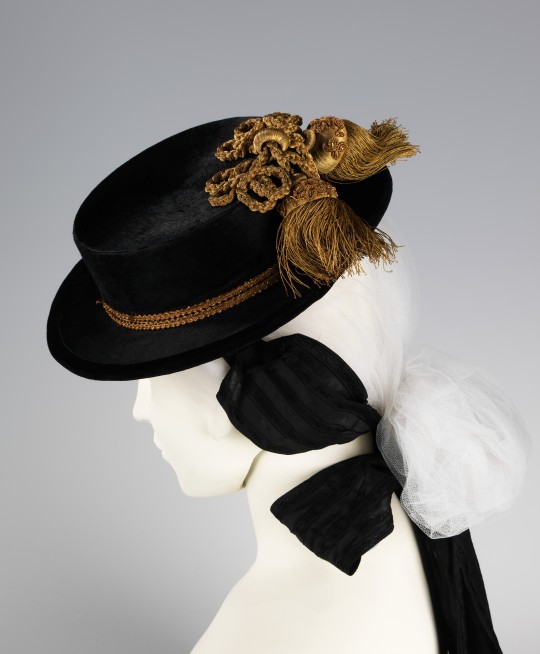
Fashion aside, I’m a little disappointed Josefina’s stories didn’t get into Mexico’s racial and class stratification, a topic AG usually handles very gracefully. Josefina and her family appear to be Mestizo, and their trip to Santa Fe would be a really good chance to explore where they fit into Mexican society.
#american girl#josefina montoya#phew! I think I covered all the points but if you or anyone else has further questions feel free to ask them
214 notes
·
View notes